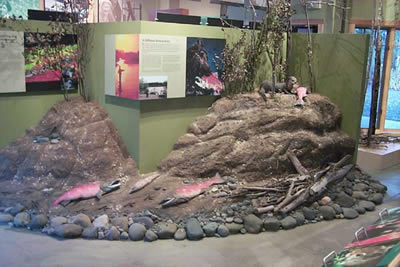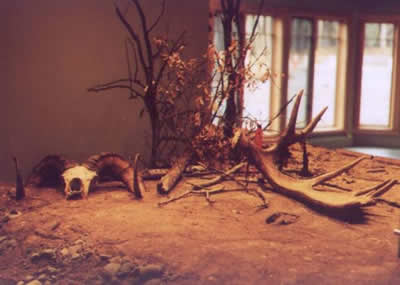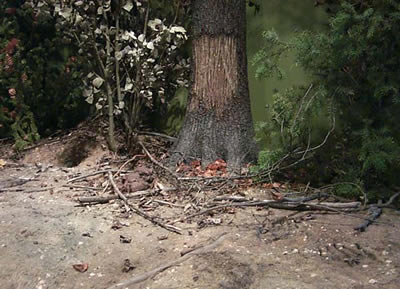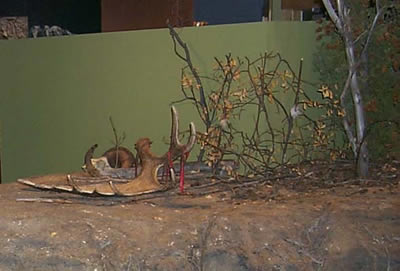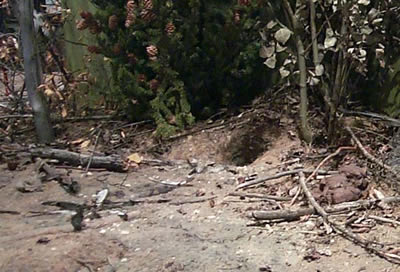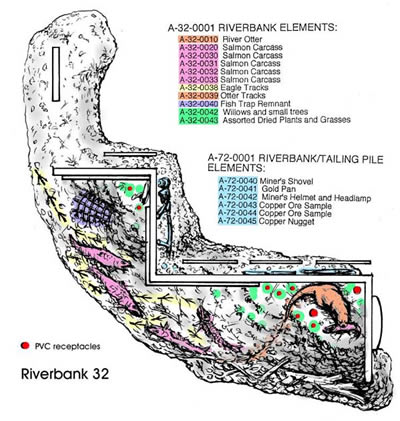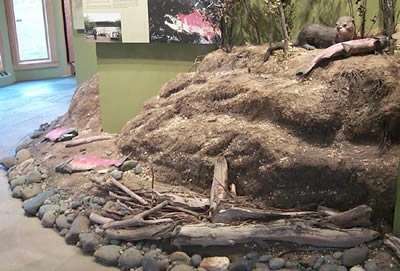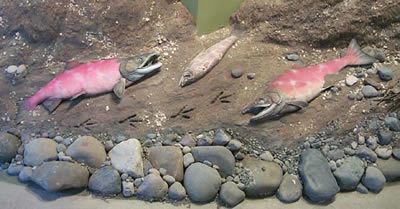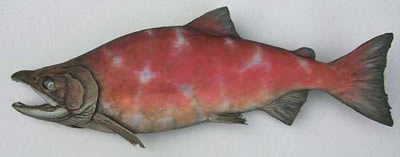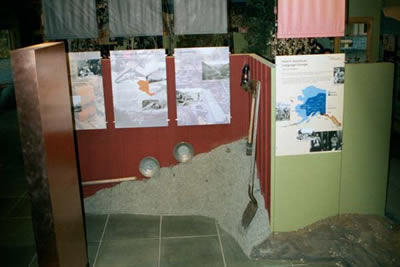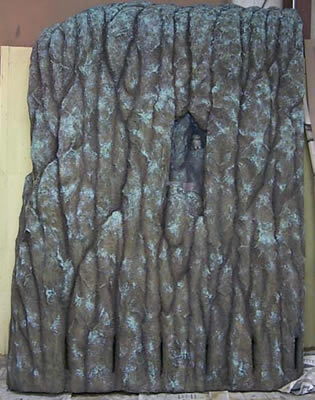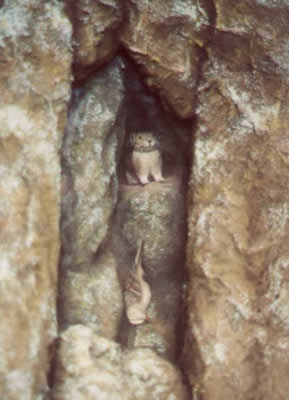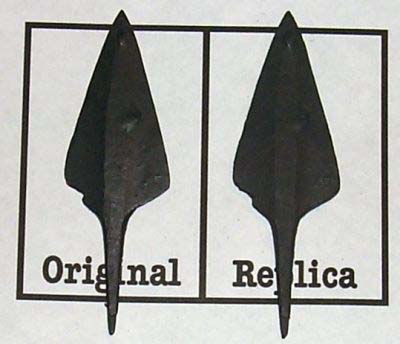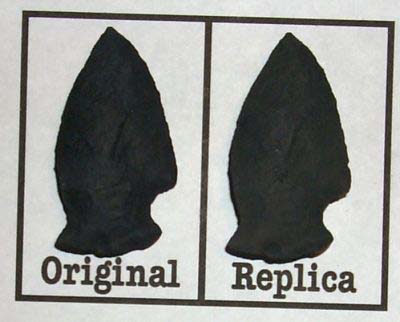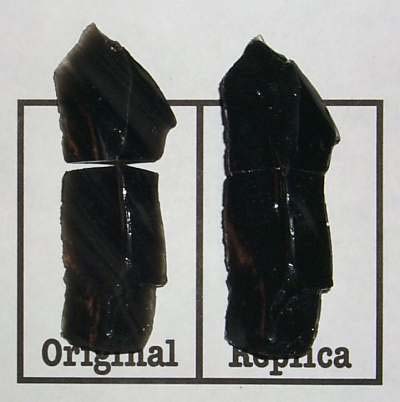
Wrangell-St.
Elias National Park & Preserve
Copper River Visitor Center, Copper Center, Alaska
This project required turning a newly constructed empty building (approximately 30' x 56') into a representation of a glacial riverbed with two types of riverbanks displaying indigenous flora, fauna and animal signs. With photomurals on every wall depicting historic and geographic specifics, as well as graphic and tactile interactives, the exhibit had to withstand the winter season and temperatures of -40°F.
My responsibilities included fabricating and installing the riverbank surfaces, all tactile flora, fauna and animal signs, and the nunataak. Along with assisting me with the fabrication and installation of "my" elements, Color-Ad produced and installed everything including the cast concrete tile floor, riverbank structures, custom cabinetry, desks, A/V, topomap, fiber-optics, graphics, photomurals, wiring, lighting, and more.
The production schedule for this project was extremely tight and some items were completed only in time to take them with me on the plane. Therefore, I am thankful I was able to enlist the help of master fabricator John MacFarlane of Wren Haven Construction who led the way fabricating root systems and proper earth structure, and turned me onto Polygem, the sculpting epoxy used throughout this and many, many other projects.
Thanks also to Dave Hrycun of Envision 3D, and Rick Krietemeier of Majestic Animal Creations, both of whom were more than accomodating and able to supply me with top quality reproductions despite the demanding schedule. Thanks to Bev & Gina at NPS for ALL their help, and, as always, thanks to the the good people at Color-Ad for letting me join them in work and play. After the job was completed, we made the time to do some touring, to see some pics of my travels - CLICK HERE.
The Riverbanks were designed (by Edquist Davis Exhibits, Seattle, WA) to represent hundreds of miles of river and thousands of feet in altitude in about 50 linear feet. As you enter the visitor center you encounter the glacial cutbank with large boulders and rocks. Rounding the bend you see the smaller rockpiles and more vegtation representing a lower altitude further downstream along the accreting bank. Animal signs begin to be evident and as you progress further along the winding riverbed. Another eroding bank further yet downstream reveals an otter, spawned-out salmon carcasses and eagle tracks; finally leading you to the tundra and displays of historic artifacts.
Although detailed design elevations were produced as plans, it was necessary for me to submit scale drawings defining the placement of all the elements required to be included in the display.
Once the scale drawings of the intended layouts were approved, the riverbanks were built in sections of plywood bases, carved styrene foam, fiberglass, and topcoated with polygem (307 Fr-Lite) and various other materials. Once shipped to the site, the sections were re-assembled, all the animal signs and elements were embedded, and all the seams were filled. The rocks and stones at the base were gathered from the actual river nearby and cemented in place.
A nunataak is a rock outcropping in the middle of a glacial flow that acts an oasis of life amidst the ice. Apparently the rock type can vary dramatically, and when I was to produce this piece there was little confirmation on the specifics. Various lichen and plant life survive among these rocks, as does a small omnivorous rodent type mammal called a pica, that actually sucks the brains out of small birds. The nunataak part of the exhibit was to represent all of this.
The earliest inhabitants of this harsh region were believed to have crossed over the Bering Straits. Known as the Late Denali people, they lived here as far back as 6000 B.C. Later in the archaelogical record we find evidence of the Northern Archaic people, and later still the Northern Athabaskan people seemed to have settled this area. The ancient artifacts in the Park's collection are too valuable to be displayed in this public exhibit. However, this ancient history and its evidence was desired to be illustrated. I was entrusted with these actual ancient obsidian tools to carefully make molds and cast reproductions for display. Quite a responsibility in that these artifacts are extremely fragile, priceless, and definitely irreplaceable. After casting, digital photos were taken and submitted showing the original artifact alongside the reproduction. All were approved, but only three were included for display within the exhibit.

